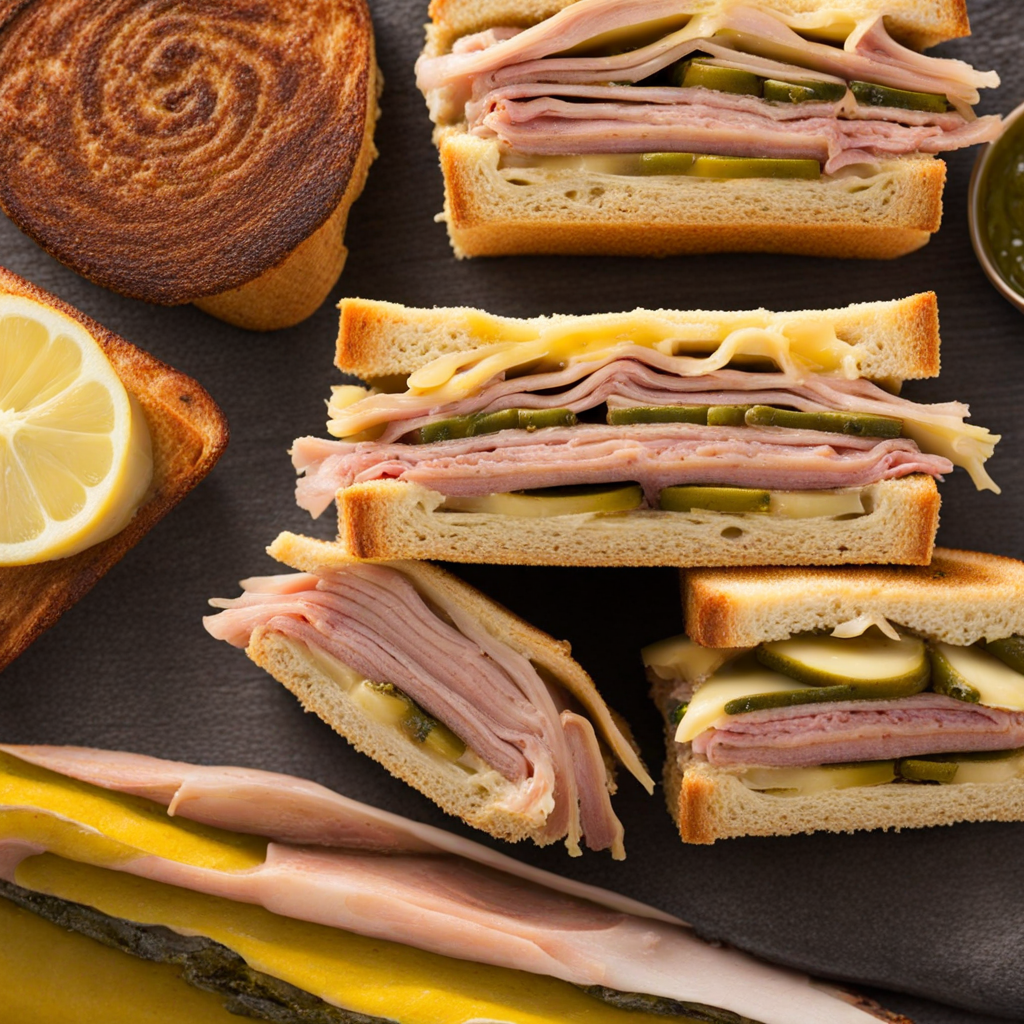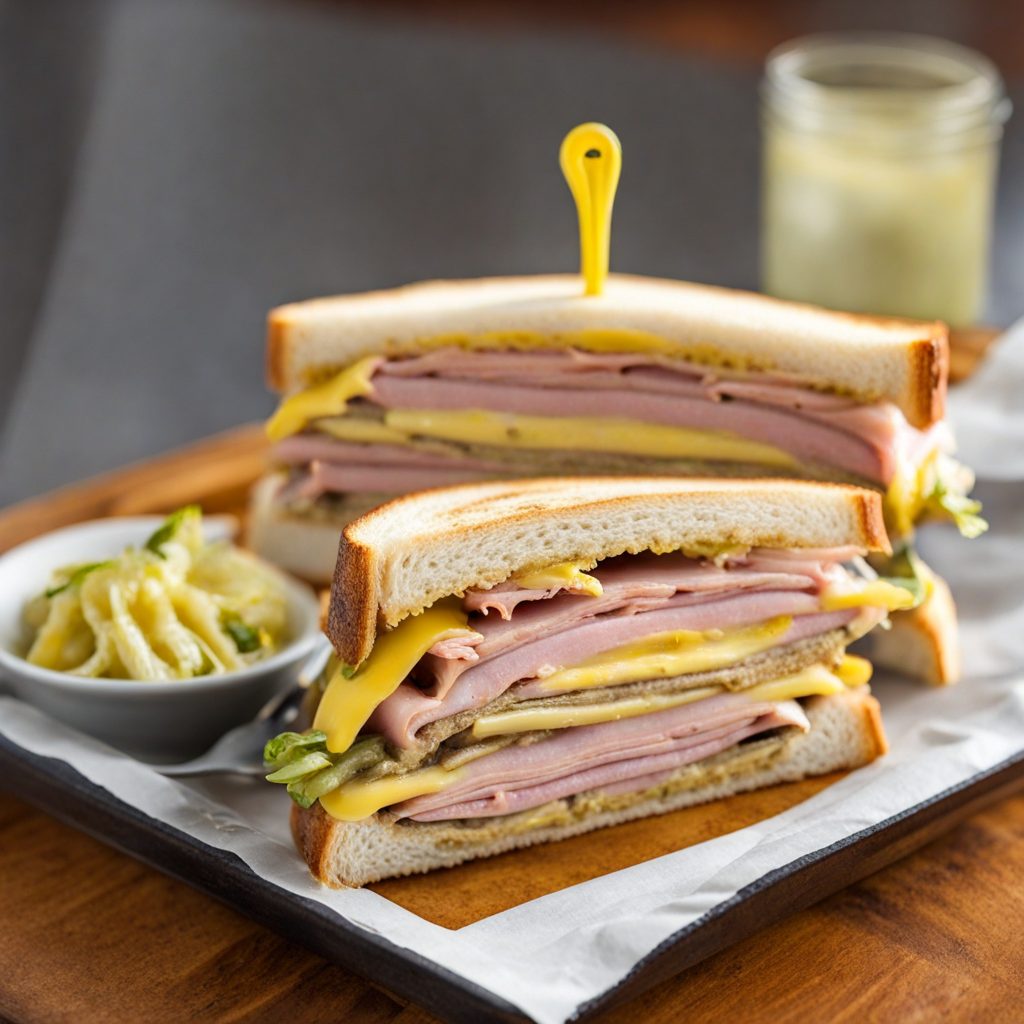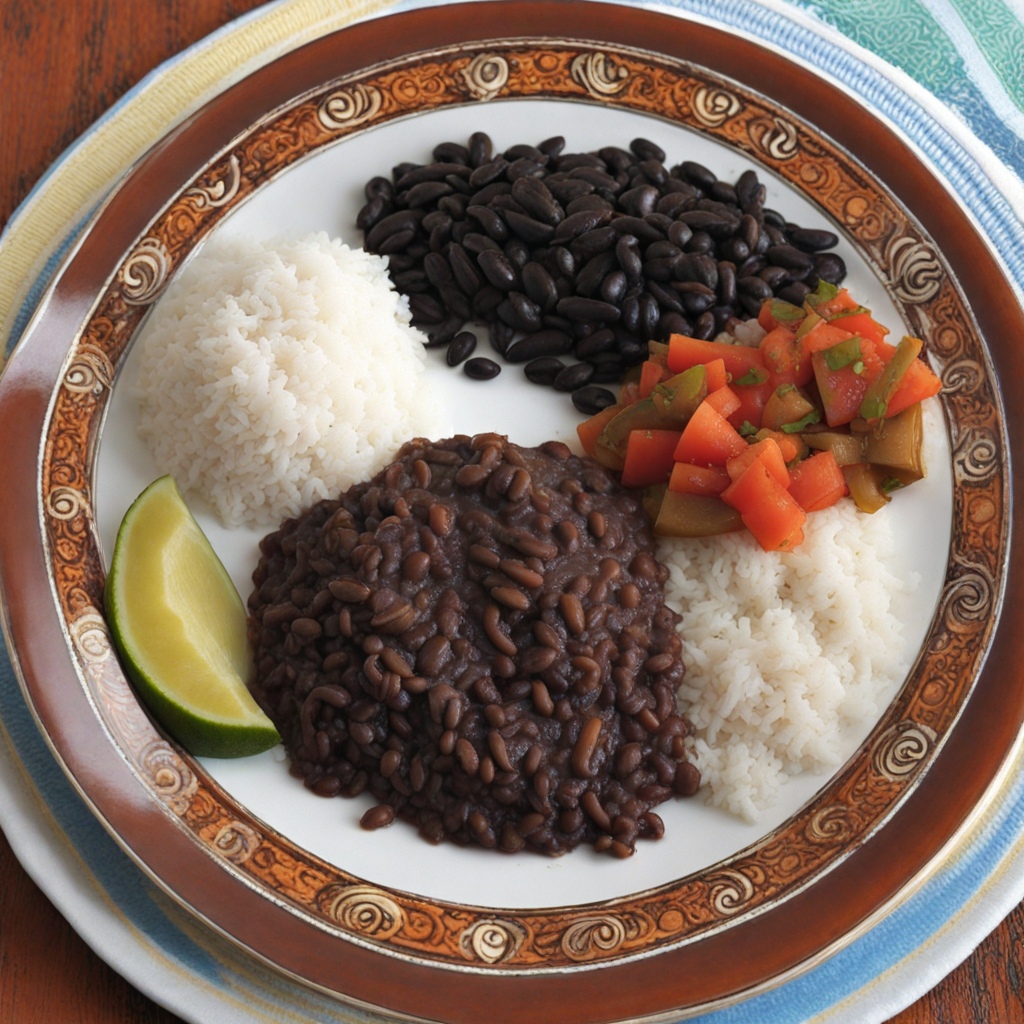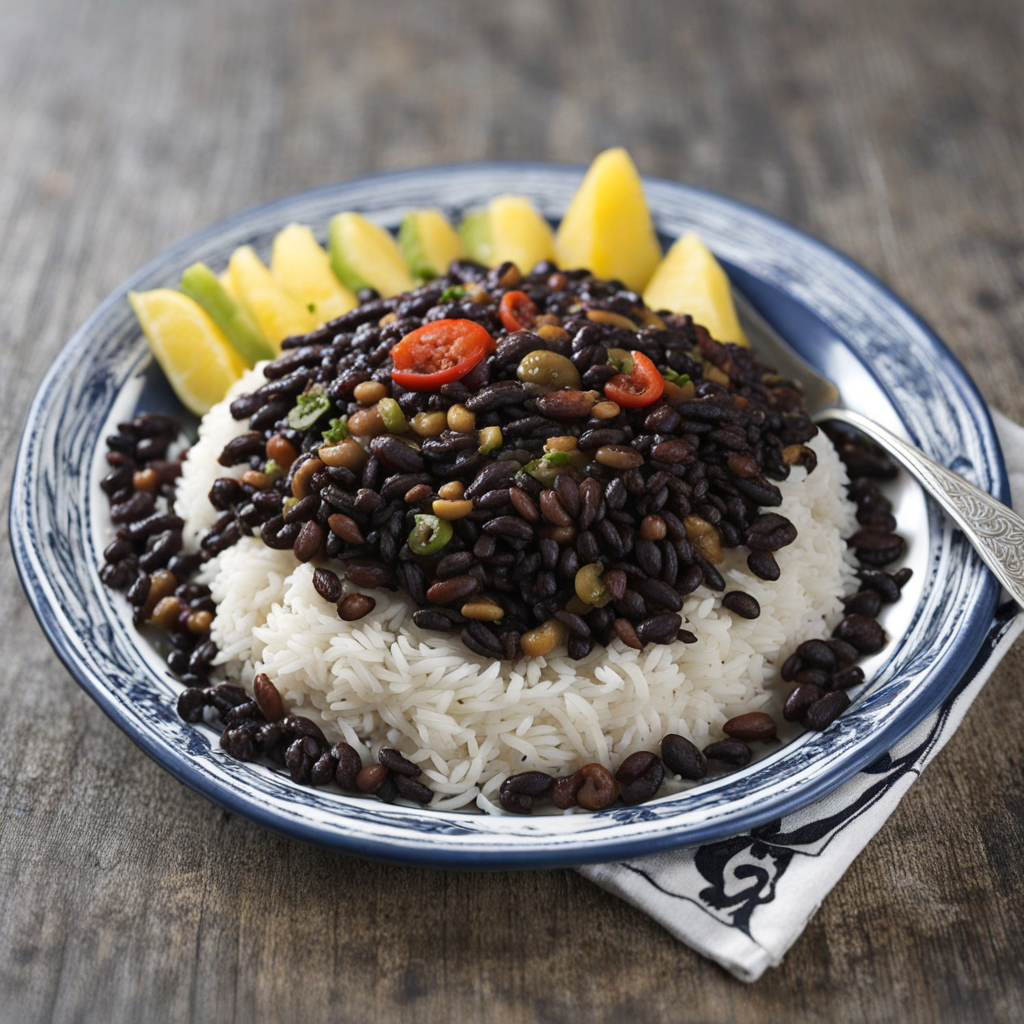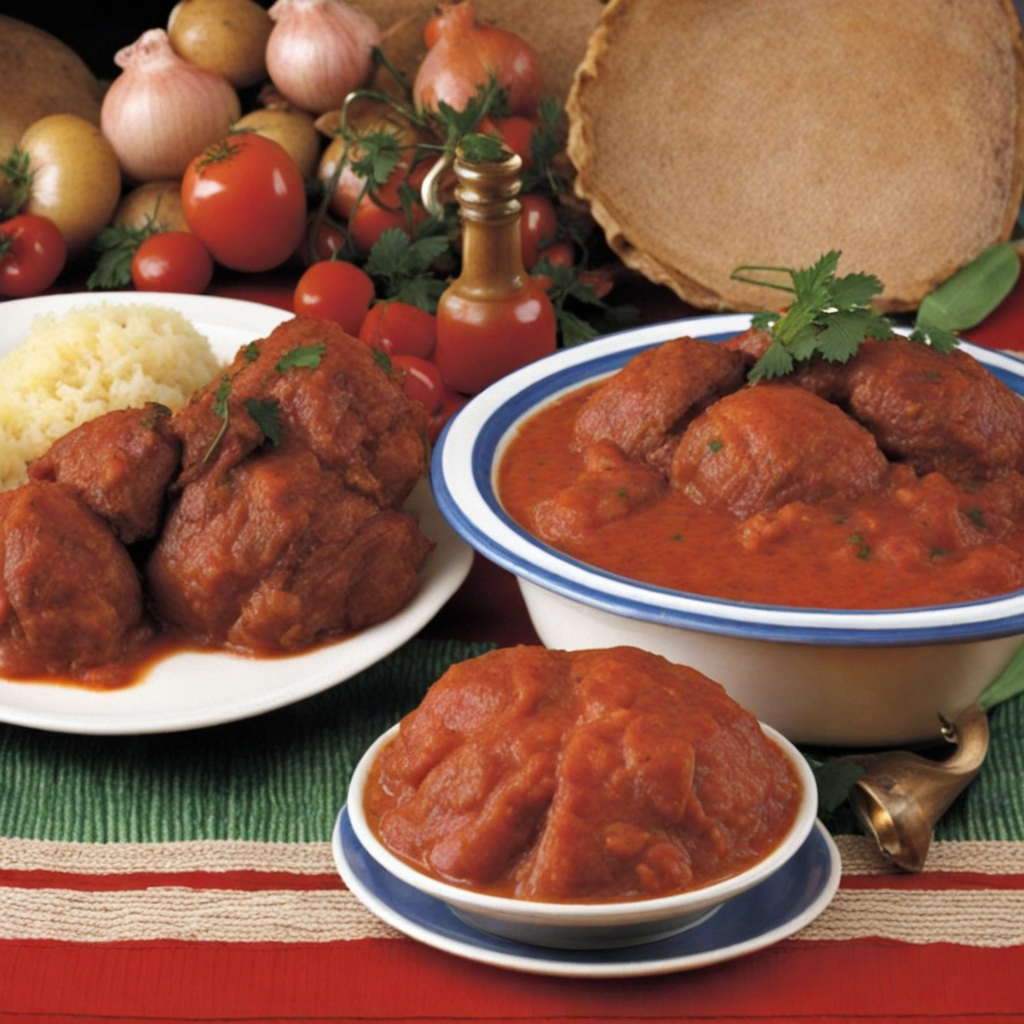Cuban Sandwich
The Cuban Sandwich is a delightful culinary creation that reflects the rich cultural tapestry of Cuba, blending flavors and ingredients that are both bold and comforting. This sandwich typically features layers of succulent, marinated roast pork, sweet ham, Swiss cheese, and tangy pickles, all encased in a crusty Cuban bread that is both chewy and slightly sweet. The combination of these ingredients creates a harmonious balance of savory, salty, and slightly sour notes that tantalize the taste buds, making each bite a celebration of flavor. What sets the Cuban Sandwich apart is not just its ingredients, but the method of preparation. The sandwich is traditionally pressed on a grill, which crisps the exterior of the bread while melting the cheese and warming the meats to perfection. This pressing technique ensures that the flavors meld together beautifully, resulting in a satisfying crunch followed by a warm, gooey interior. The aroma of the toasting bread, mingled with the scents of the roasted pork and melted cheese, is an irresistible invitation to indulge. Beyond its delicious taste, the Cuban Sandwich is also a symbol of community and tradition, often enjoyed during casual gatherings or as a quick meal on the go. Each region and family may have its own twist on the classic recipe, incorporating personal touches such as different types of mustard or additional toppings, which adds to the charm of this beloved dish. Whether enjoyed at a local café in Havana or made at home, the Cuban Sandwich offers a unique culinary experience that transports you to the vibrant streets of Cuba with every bite.
How It Became This Dish
The Sandwich Cubano: A Flavorful Journey Through History The Sandwich Cubano, or Cuban sandwich, stands as a delicious emblem of Cuban culture, a culinary creation that has transcended its humble origins to become a beloved staple not only in Cuba but also in many parts of the world, especially in the United States. This savory delight, typically made with layers of roast pork, ham, Swiss cheese, pickles, and mustard, all encased in a soft Cuban bread, has a rich history that intertwines with the socio-political narratives of Cuba and its diaspora. #### Origins The exact origins of the Cuban sandwich are somewhat murky, but it is generally accepted that its roots can be traced back to the late 19th century, during a time when Cuba was experiencing significant economic and social changes. The sandwich is believed to have emerged in the cigar factories of Key West, Florida, and later in Tampa, where a large Cuban immigrant community was established. These workers would often enjoy a quick, hearty meal that could easily be assembled and consumed during their breaks, thus giving birth to the Cuban sandwich. The ingredients used in the sandwich reflect the diverse influences that shaped Cuban cuisine. The bread, a variation of French or Italian bread, is crucial to the sandwich's identity. The use of roast pork, an essential component of the Cuban culinary tradition, speaks to the indigenous Taíno, Spanish, and African influences present in the island's history. Ham, which was introduced by Spanish colonizers, further enriches the sandwich's flavor profile, while Swiss cheese connects it to the European influences that permeated the island’s gastronomy. #### Cultural Significance The Cuban sandwich is not merely a culinary dish; it embodies the spirit and resilience of the Cuban people. As a product of the Cuban diaspora, it has become a symbol of cultural identity and pride. The sandwich represents the history of migration, labor, and the melding of cultures. For many Cubans, the Cuban sandwich is a nostalgic reminder of home, evoking memories of family gatherings, local eateries, and the vibrant streets of Havana. In Cuba, the Cuban sandwich is often enjoyed as a street food, available at small cafés and food stalls. It is typically served alongside a refreshing beverage, such as a cold glass of guava juice or a café con leche. The communal aspect of sharing a sandwich with friends and family highlights its role in social gatherings and celebrations. As the Cuban population began to emigrate in significant numbers, particularly after the Cuban Revolution of 1959, the sandwich traveled with them, evolving and adapting to its new environments. #### Development Over Time As the Cuban sandwich began to gain popularity in the United States, particularly in Florida, its composition and presentation started to shift. In Tampa, the sandwich is often made with salami, a nod to the Italian immigrant influence in the area. Many locals argue that this variation, with its distinct layers of meat, is the original Cuban sandwich, a point of contention that has sparked passionate debate among sandwich aficionados. In Miami, the Cuban sandwich has become a culinary icon, characterized by its emphasis on juicy roast pork and the traditional use of a Cuban bread that is slightly crusty on the outside and soft on the inside. Miami's Cuban sandwich culture has also embraced the use of pressed sandwiches, where the sandwich is placed on a grill or a sandwich press to achieve a perfectly toasted crust that melds the flavors together. With the rise of food trucks and gourmet sandwich shops in recent years, the Cuban sandwich has experienced a renaissance. Chefs and culinary enthusiasts have begun experimenting with the classic recipe, incorporating unique ingredients and techniques. Variations such as the “Cuban frita” — a Cuban burger topped with shoestring potatoes — and fusion versions that blend elements from different cuisines have emerged, showcasing the sandwich’s adaptability and timeless appeal. #### The Cuban Sandwich Today Today, the Cuban sandwich is celebrated across the United States and beyond, with festivals dedicated to this beloved dish. The Sandwich Cubano has been featured in numerous food shows, documentaries, and cookbooks, further solidifying its status as an iconic dish. In 2012, the Cuban sandwich was even declared the official sandwich of the city of Miami, a testament to its cultural significance and popularity. Various restaurants and eateries have sprung up, each claiming to offer the “best” Cuban sandwich, leading to a vibrant food scene where traditions are honored while innovation flourishes. The sandwich has appeared on menus in all manner of establishments, from upscale restaurants to casual food stalls, reflecting its versatility and universal appeal. In recent years, the global interest in Cuban cuisine has surged, partly fueled by cultural exchanges and an increasing appreciation for authentic, diverse culinary experiences. The Cuban sandwich, with its rich flavors and storied history, has become a gateway for many to explore the broader culinary landscape of Cuba, inviting diners to savor not only the sandwich itself but also the cultural narratives that accompany it. #### Conclusion The history of the Sandwich Cubano is a testament to the resilience and creativity of the Cuban people. It is a dish that tells the story of an island's complex past, shaped by migration, cultural exchange, and the enduring spirit of community. Each bite of a Cuban sandwich carries with it the flavors of history, the vibrancy of Cuban life, and the warmth of shared experiences. As it continues to evolve and adapt, the Sandwich Cubano remains a delicious reminder of the power of food to connect us to our roots, our communities, and each other, bridging gaps between cultures and generations.
You may like
Discover local flavors from Cuba


